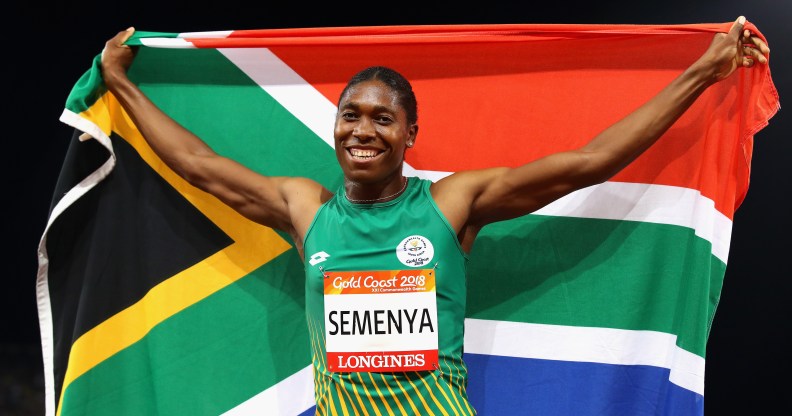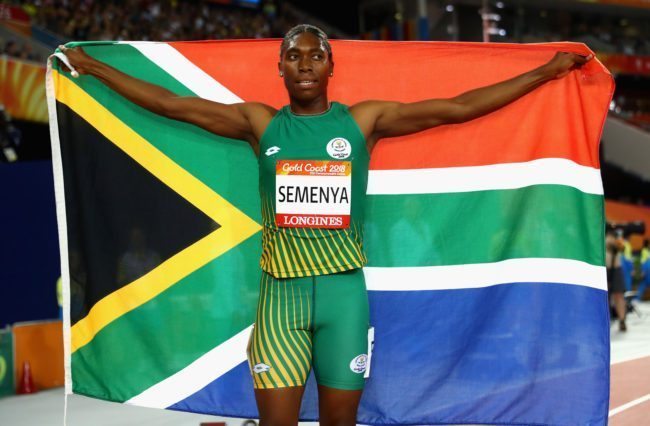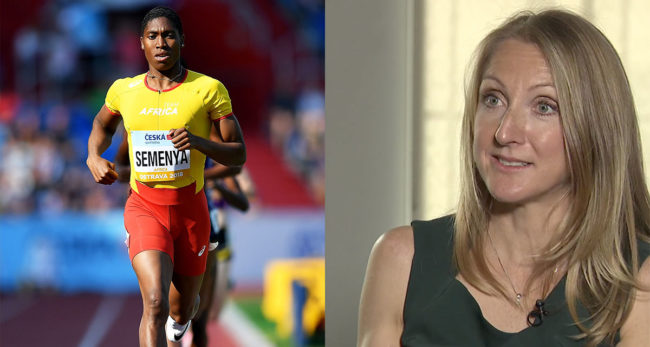Caster Semenya loses case challenging testosterone levels

Caster Semenya. (Francois Nel/Getty)
The Court of Arbitration for Sport (CAS) has ruled against gold medallist Caster Semenya, who challenged the implementation of rules which would limit the testosterone levels of female athletes.
The landmark ruling on May 1, brought forward by the South African three-time world champion, comes after a long and bitter dispute over proposed rules by the International Association of Athletics Federations (IAAF) last year.
Under the regulations, the IAAF rule that female athletes with a so-called difference of sexual development (DSD), will have to undergo testosterone restrictions. The UN condemned such treatment as an “unnecessary, humiliating and harmful medical procedure.”
In reaction to the ruling, the athlete simply tweeted a graphic which read: “sometimes it’s better to react with no reaction.”
?♂️ pic.twitter.com/FHmm10npfx
— Caster Semenya (@caster800m) May 1, 2019
The CAS ruling stated: “DSD Regulations are discriminatory but the majority of the Panel found that… such discrimination is a necessary, reasonable and proportionate means of achieving the IAAF’s aim of preserving the integrity of female athletics in the Restricted Events.”
In response to the decision, the IAAF said it was “grateful to the Court of Arbitration for Sport for its detailed and prompt response” and “pleased that the regulations were found to be a necessary, reasonable and proportionate means of achieving the IAAF’s legitimate aim of preserving the integrity of female athletics.”
Caster Semenya to undergo hormone therapy before competitions due to high testosterone levels
Semenya, 28, who has naturally high testosterone levels, will now have to undergo hormone therapy for at least six months before competing in any competition. The rules stipulate those female runners with so-called DSD who compete in events between 400m and a mile will have to undergo the procedure.

Caster Semenya of South Africa celebrates wins gold in the Women’s 800 metres final during athletics on day nine of the Gold Coast 2018 Commonwealth Games. (Photo by Michael Steele/Getty Images)
An IAAF statement in February explained the proposals: “If a DSD athlete has testes and male levels of testosterone, they get the same increases in bone and muscle size and strength and increases in haemoglobin that a male gets when they go through puberty, which is what gives men such a performance advantage over women.
“Therefore, to preserve fair competition in the female category, it is necessary to require DSD athletes to reduce their testosterone down to female levels before they compete at international level.”
What if she won?
It was suggested that, if the verdict went against the IAAF, athletics might have introduced an ‘open’ category that men and women could, in theory, compete in side by side, and a ‘protected’ category based on hormone levels, rather than gender.
Her legal team argued her advantages are no different from other genetic variations celebrated in sport, and that “her genetic gift should be celebrated, not discriminated against.”
They also maintained: “Her case is about the rights of women who are born as women, reared and socialised as women—[to] be permitted to compete in the female category without discrimination.”
Finally, they said the IAAF’s requirement for DSDs to take hormone suppressants to reduce testosterone is ethically wrong and potentially poses a health risk.
A bitter dispute over DSD athletes
The Semenya case divided opinion across the athletic world. One of the people with the most outspoken opinions against the case was marathon runner Paula Radcliffe.
Radcliffe said that the ruling could hand intersex and transgender athletes an unfair advantage, and ultimately bring about the end of women’s sport.
The former marathon runner claimed that should Semenya’s appeal be successful, coaches could begin seeking out women with similarly high testosterone levels.

Caster Semenya and Paula Radcliffe (Getty; Sky News)
“It would be naive to think if this rule didn’t go through that there aren’t some people out there, managers or federations, who would actively seek out girls with this condition and say: ‘Right, you are going to do this sport and this event so that we can win,’” she told Sky News on Thursday (April 18).
While IAAF president Lord Sebastian Coe explained the decision to bring forward the proposals: “No individual athlete has been targeted in the creation of the regulations. We need to create competition categories within our sport that ensure that success is determined by talent, dedication and hard work, rather than by other factors that are not considered fair or meaningful, such as the enormous physical advantages that an adult has over a child, or a male athlete has over a female athlete,” he said.
Throughout the case, Semenya has said, “I just want to run naturally, the way I was born.”
What about trans athletes?
Critics of Semenya’s legal challenge, such as Radcliffe, argue that it would “open the door to cases for trans athletes,” who currently have to lower their testosterone levels to complete. Radcliffe has previously argued for trans athletes to be banned from competing in elite sports.
Joanna Harper, who advises the International Olympic Committee (IOC) on regulations for trans athletes, has told The Guardian that “the IOC is waiting to see what happens in the Semenya case” before announcing testosterone limits for trans athletes in the Tokyo 2020 games.

